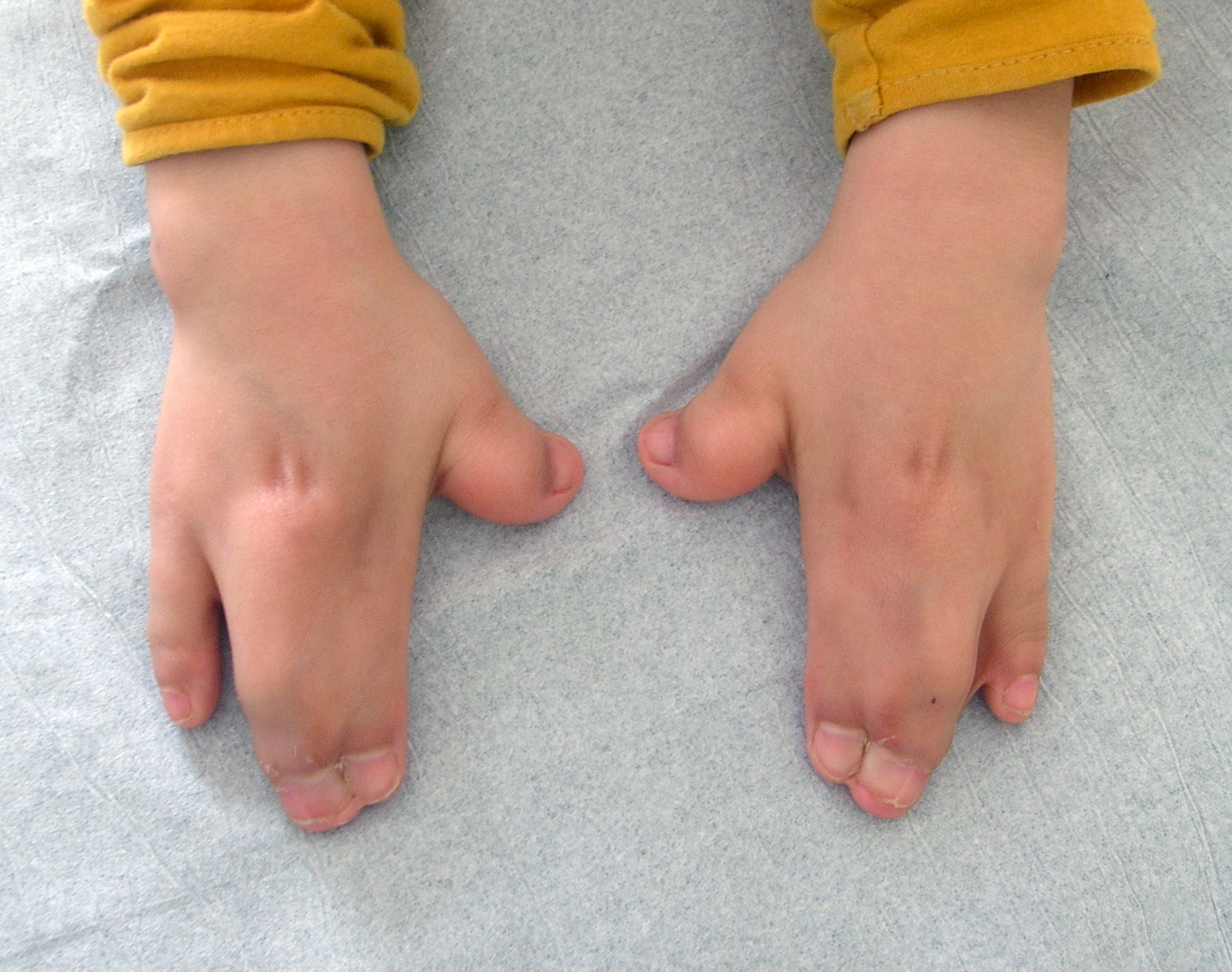What are the symptoms of syndactyly?
Syndactyly is a condition where two or more fingers or toes are fused together. The symptoms of syndactyly typically include:
- Fused Digits: The primary symptom is the physical fusion of two or more fingers or toes. The degree of fusion can vary, ranging from partial (where the digits are joined but still partially separate) to complete (where the digits are fully merged).
- Abnormal Appearance: The affected fingers or toes may appear webbed or conjoined. There might be a lack of distinct separation between the digits.
- Limited Movement: There may be reduced mobility or difficulty moving the affected digits independently. This can impact the ability to grasp or manipulate objects with the fingers or to walk normally with the toes.
- Skin Changes: The skin between the fused digits may be thicker or have a different texture compared to the surrounding skin. There might be visible scars or irregularities.
- Functional Impairment: In cases where the fusion affects hand or foot function, there can be difficulties with everyday tasks, such as writing, typing, or walking.
- Potential Discomfort: Depending on the degree of fusion and any associated skin or joint issues, there may be discomfort or pain, especially if the condition causes functional limitations or skin irritation.
Syndactyly can occur as an isolated condition or be part of a genetic syndrome. It is usually diagnosed at birth or shortly after, and treatment often involves surgical separation of the fused digits if needed for functional or cosmetic reasons.
What are the causes of syndactyly?
Syndactyly, the condition where two or more fingers or toes are fused together, can be caused by various factors:
- Genetic Factors: Syndactyly can be inherited in an autosomal dominant or recessive pattern. It can occur as part of a genetic syndrome or as an isolated condition. Mutations in specific genes, such as those involved in limb development, can lead to syndactyly.
- Genetic Syndromes: Syndactyly is often associated with certain genetic syndromes, including:
- Apraxia of Speech: A condition that affects speech motor control and may include syndactyly among other features.
- Holt-Oram Syndrome: Characterized by heart defects and skeletal abnormalities, including syndactyly.
- Williams Syndrome: A genetic condition with cardiovascular, developmental, and connective tissue abnormalities, including syndactyly.
- Coffin-Siris Syndrome: A rare genetic disorder that can include syndactyly among other developmental issues.
- Environmental Factors: In some cases, syndactyly may be influenced by environmental factors during pregnancy, though this is less common. For example, exposure to certain medications or toxins during fetal development might contribute to congenital anomalies.
- Embryonic Development Issues: Syndactyly results from disruptions during the early stages of embryonic development when the fingers or toes are forming. If the normal process of separating the digits does not occur properly, syndactyly can result.
- Chromosomal Abnormalities: Although less common, certain chromosomal abnormalities can be associated with syndactyly. For example, conditions like trisomy 13 (Patau syndrome) and trisomy 18 (Edwards syndrome) may include syndactyly as one of their features.
Syndactyly can be an isolated anomaly or part of a broader range of developmental issues, and understanding the underlying cause is essential for appropriate management and treatment.
What is the treatment for syndactyly?
The treatment for syndactyly generally involves surgical intervention to separate the fused digits and improve function and appearance. The specific approach depends on the severity of the condition and whether it is part of a broader syndrome. Treatment options include:
- Surgical Separation: The primary treatment for syndactyly is surgery to separate the fused fingers or toes. The timing of surgery can vary, but it is often performed during early childhood to enhance functional and cosmetic outcomes. The procedure aims to separate the digits and reconstruct the skin and, if necessary, the underlying tissues to restore normal appearance and function.
- Reconstructive Surgery: In more complex cases, additional reconstructive surgery may be needed to improve the function and appearance of the separated digits. This can involve skin grafts or other techniques to ensure the proper formation of the fingers or toes.
- Post-Surgical Care: After surgery, care involves wound management, physical therapy, and regular follow-up to monitor healing and ensure proper function. Physical therapy can help in regaining the full range of motion and strength in the affected digits.
- Orthopedic and Hand Therapy: For older children or adults, specialized therapy may be necessary to improve hand or foot function after surgical separation. This can include exercises to enhance dexterity and strength.
- Monitoring and Follow-Up: Regular follow-up with a healthcare provider is essential to assess the results of surgery and make any necessary adjustments. This includes monitoring for any complications or issues related to the healing process.
- Genetic Counseling: If syndactyly is part of a genetic syndrome, genetic counseling may be recommended for families to understand the broader implications and possible implications for future pregnancies.
Treatment is tailored to each individual based on the extent of the syndactyly, associated conditions, and overall health. The goal is to achieve the best possible functional and aesthetic outcomes while addressing any underlying issues.

Leave a Reply
You must be logged in to post a comment.